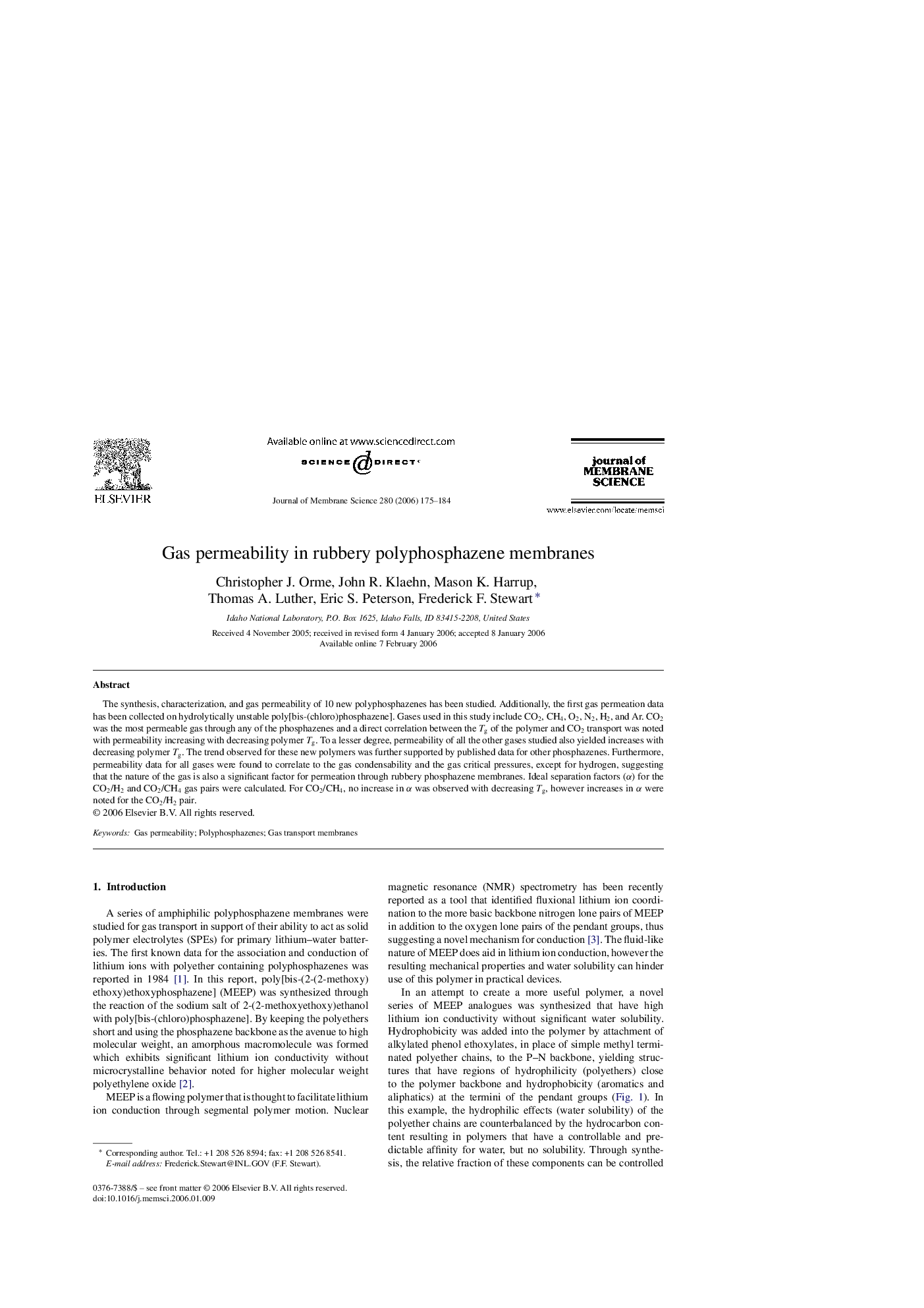| Article ID | Journal | Published Year | Pages | File Type |
|---|---|---|---|---|
| 638841 | Journal of Membrane Science | 2006 | 10 Pages |
The synthesis, characterization, and gas permeability of 10 new polyphosphazenes has been studied. Additionally, the first gas permeation data has been collected on hydrolytically unstable poly[bis-(chloro)phosphazene]. Gases used in this study include CO2, CH4, O2, N2, H2, and Ar. CO2 was the most permeable gas through any of the phosphazenes and a direct correlation between the Tg of the polymer and CO2 transport was noted with permeability increasing with decreasing polymer Tg. To a lesser degree, permeability of all the other gases studied also yielded increases with decreasing polymer Tg. The trend observed for these new polymers was further supported by published data for other phosphazenes. Furthermore, permeability data for all gases were found to correlate to the gas condensability and the gas critical pressures, except for hydrogen, suggesting that the nature of the gas is also a significant factor for permeation through rubbery phosphazene membranes. Ideal separation factors (α) for the CO2/H2 and CO2/CH4 gas pairs were calculated. For CO2/CH4, no increase in α was observed with decreasing Tg, however increases in α were noted for the CO2/H2 pair.
